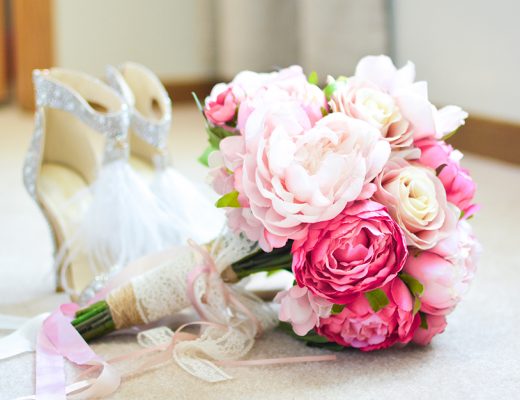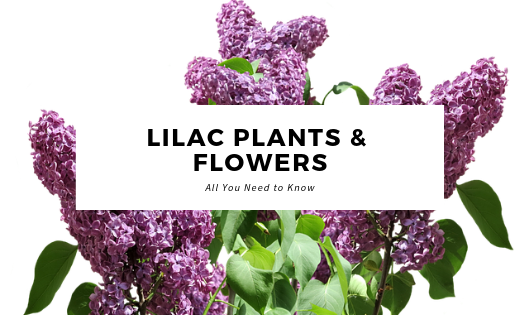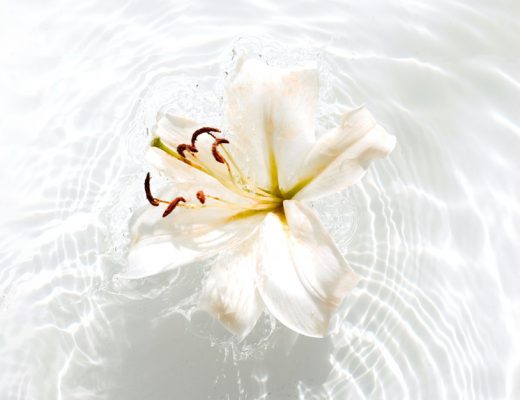When you think of uses for flowers, chances are a couple of things spring to mind.
Just about everyone uses them for ornamental purposes.
And most people send them to loved ones, whether it’s for a special anniversary or to apologise for doing something stupid.
Some free spirits like to put them in their hair and prance around a bit.
To each their own…
But what other uses for flowers exist? Could there be uses for them that you’ve never heard of?
Yes, there are, and in this guide, you’ll learn about 7 of the coolest!
Weird Use for Flowers #1: Homemade Geiger Counter
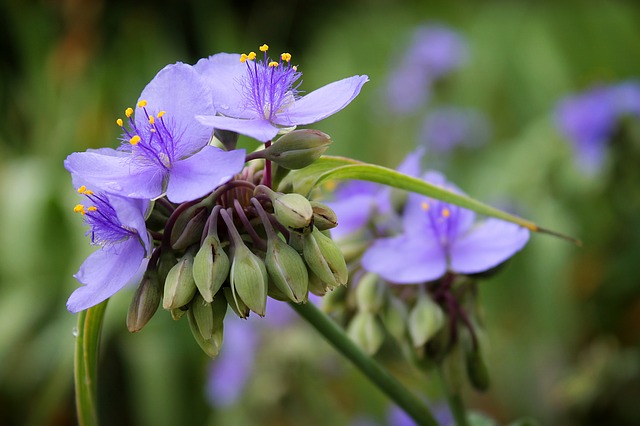
Watch the colour of the fuzzy parts in the centre! If they turn pink, there could be high levels of radiation.
Have you ever found yourself in a situation where you really wished you had a Geiger counter?
Maybe you went for a long walk and found yourself in Chernobyl, or woke up after a big night out and found yourself in Fukushima. Either way, you’ll want to know if you’ve been exposed to any dangerous levels of radiation.
It’s not something that you’re likely to worry about often, but if you do, you’ll want to make sure that you have some spiderwort handy.
In 1979, a Japanese scientist discovered that certain varieties of cloned spiderwort could be used to detect small amounts of radiation.
When radiation destroys the material responsible for the blue colour of the stamen hairs, they change their appearance and begin to appear as pink.
So if you think you could be somewhere with high levels of radiation and you don’t have access to a mechanical Geiger counter, make sure your pockets are filled with spiderwort instead.
Weird Use for Flowers #2: Create Your Own Soap

Two Aztecs possibly cleaning themselves with Aztec soap
Are you tired of using conventional big-brand soap?
Perhaps you feel like organic, farmers market soap isn’t quite natural enough for you?
If so, then you’re in luck.
When the Spanish Conquistadores first met the Aztecs, they were surprised to notice how clean everyone was.
This was still the age when Europeans largely avoided bathing since it was thought that layers of dirt protected them against plague and disease, so seeing clean (yet healthy) people must have come as quite a shock.
The secret to their cleanliness was a plant they called xuihamolli. The Spanish creatively called it the “soap-plant”, and the modern scientific name is Saponaria americana.
The Aztecs would regularly bathe in whatever water was available to them; the rich had their own bathhouses while the common people may have resorted to rivers and lakes.
Down to their bath they would take some leaves from the soap-plant and once soaked in water, these leaves could be used just like soap today.
This plant is not native to Australia so it might be a bit tricky getting your hands on some, but if you’re the type to buy your soap from farmers markets then you’ll probably enjoy the extra effort anyway.
Weird Use for Flowers #3: Readily Available Litmus Paper

Different coloured flowers… why would that happen?
Think back to your high school chemistry classes and you’ll probably remember litmus paper; the bits of paper that change colour according to whether the solution they’re dipped in is acidic or basic.
If you’ve ever found yourself in a situation where you’ve found yourself without litmus paper, then fear no more, as we have a natural alternative for you that you might very well be able to find in your backyard.
It turns out that hydrangeas, one of the world’s most popular plants, actually a great natural pH indicator.
This might sound strange until you learn that litmus paper is actually made from various species of lichen.
The reason hydrangeas can act as pH indicators while other flowers can’t is that technically… what we think of hydrangea flowers aren’t really flowers at all.
When you stop to appreciate a pretty hydrangea, what you’re actually appreciating are the sepals.
Sepals are a bit like modified leaves. On roses, sepals are the green petal-like parts of the rose that envelope the actual petals. The actual flower parts of a hydrangea are arranged in a similar fashion but are much smaller than on a rose.
Because of some complicated chemistry, it turns out that the blooms of the hydrangea reflect the pH levels of the soil they’re planted in.
Soils that are more acidic result in blooms that are blue, while more alkaline conditions result in blooms that are closer to pink.
In addition to using your plants as pH indicators, it also means that you can tinker with the colours yourself.
To make the soil more acidic, some gardeners like to add coffee grounds, rusty nails or even just pour vinegar into the soil.
Weird Use for Flowers #4: DIY Air Purifier
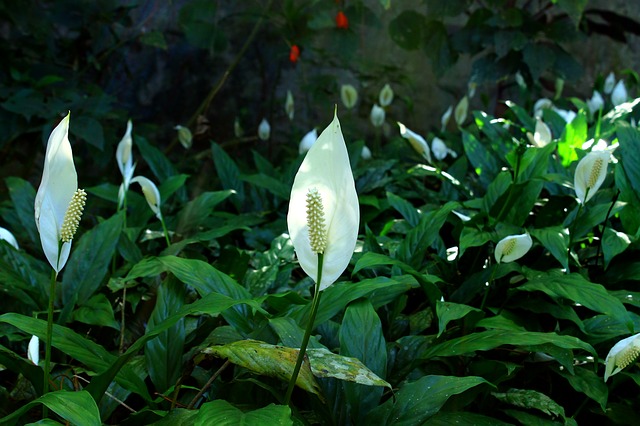
Could peace lilies do more than just look pretty?
Most people who want cleaner air buy a machine to do the job for them, but did you know that you can use flowers instead?
Back in the 80s when NASA had more time and money on their hands than they do now, they started doing research into indoor plants.
They weren’t looking at indoor plants the way an interior decorator might; instead they wanted to figure out how plants could purify the air.
As it turns out, chemicals in the air can be removed by certain plants. And in this regard, not all plants are created equal.
Flowers were placed in containers with air pollutants and the concentration of the pollutant was measured after some time.
Some of the best flowers were:
- Peace lily
- English Ivy
- Bamboo palm
- Janet Craig
The best thing was that noticeable changes happened within just hours.
A setup that included the use of carbon filters was found to have been even more effective.
If you’d like to set up something similar for your own home or office, you can read the full study here.
Weird Use for Flowers #5: Natural Radiation Absorbers
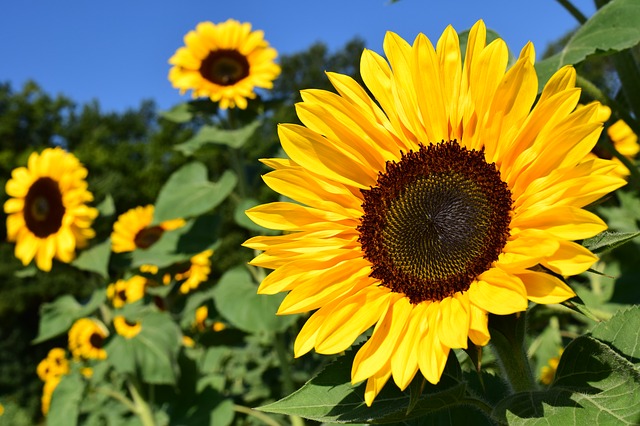
Sunflowers hard at work
As well as removing unwanted chemicals from the air, plants and flowers can also be used to remove radiation from the environment.
And you don’t need to be living next to Chernobyl to benefit from these plants, as electromagnetic radiation is all around us.
That said, scientists in Japan are currently using sunflowers to soak up radiation from the Fukushima disaster.
It turns out that they’re particularly good at their job.
Because flowers have evolved to be very good at sucking up nutrients and other material from the ground, they’re also quite good at sucking up radiation.
Once the flowers have grown to their full size, they’re removed from the ground and disposed of safely. This is cheaper than removing the soil altogether.
The reason that a single sunflower can absorb so much radiation is because of the complex root system.
While a single plant is not large, they have lots of tiny roots, the combined length of which stretches out a long way.
So if you find yourself with a backyard full of unwanted radioactive material, planting some sunflowers might be helpful.
Weird Use for Flowers #6: Chemical Free Pesticides
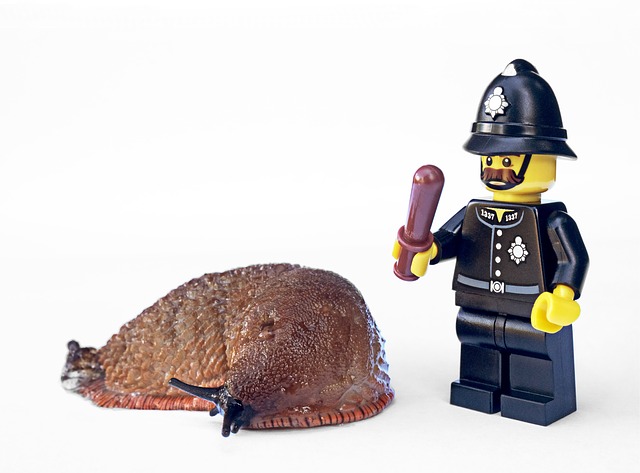
No slugs were harmed in the making of this post
When most people think of pesticides they think of dangerous chemicals.
And while it’s true that pesticides are often pretty harsh and sometimes downright harmful to health, did you know that there are natural alternatives that don’t require health warnings from the government?
It turns out certain species of plants can be used instead of pesticides.
How it works is pretty simple.
Instead of spraying pesticides to kill off every living creature in your garden, the idea is to encourage apex predators into your garden to do the killing for you.
And as far as mercenaries go, you’ll find that most of these types of predators are actually pretty cheap.
All you need to do is add plants to your garden that the predators like to eat.
For example, if your garden is suffering from an influx of snails, you could encourage birds or skinks to take up residence in your garden to deal with them.
You do this by planting things in your garden that birds or skinks like.
What you would need to plant depends entirely on the pests you’re suffering from, so it’s hard to give out any specific information here.
Luckily, though, we’ve created a post that goes into a lot of detail on this:
Flowers instead of Pesticides – Flowers Across Melbourne
Weird Use for Flowers #7: Backyard Medicines
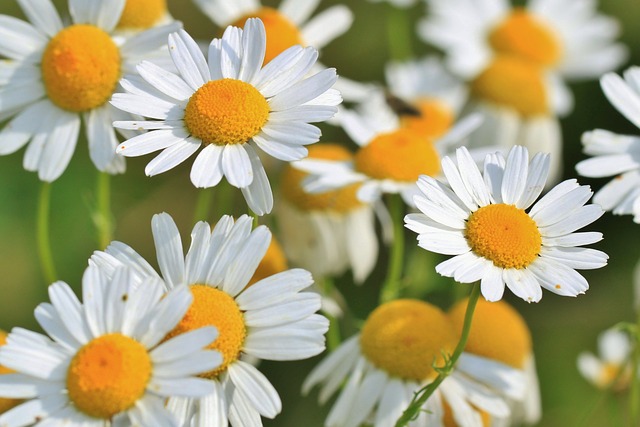
In just about every ancient culture on earth, humans have found various plants and flowers to help with what ailed them.
This was important in the olden days because getting good medicines was much harder than it is today.
Now, while we’re not encouraging you to skip the doctor or bypass your local chemist, there are some plants and flowers that do have medicinal uses.
Begonia flowers are one such example. Their flowers and leaves have long been used to help treat burns when rubbed over the affected area.
California poppy is another flower with medicinal properties. And despite the name, this variety of poppy contains no opium!
It can help with treating anxiety and stress, as well as helping people with insomnia.
There are lots of other plants and flowers that have medicinal purposes, but this was just meant to whet your appetite for flower knowledge!
Conclusion
That’s all she wrote folks!
Hopefully, this gives you a few ideas on uses for flowers and plants that are a little out of the ordinary.
Far too many people only think about flowers in terms of decoration, but as you can now see there’s so much more to it than most people think.
Which use was your favourite?
Do you know of another use that we’ve missed out on?
If so, let us know in the comments!

